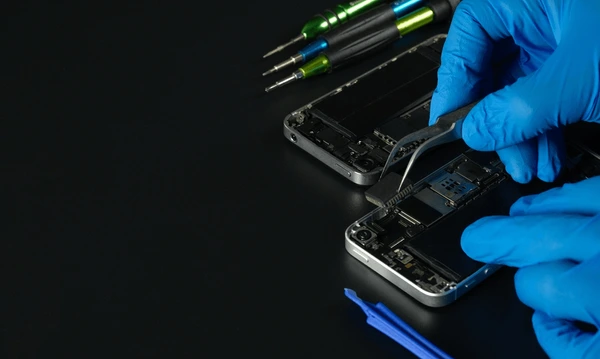Understanding the Risks of DIY Phone Repairs

Attempting to fix your own smartphone can seem like a rewarding and cost-saving adventure. Countless online tutorials, video guides, and repair kits promote the idea that anyone can fix their device with a few tools and some patience. The appeal is strong—avoid long waiting times, save on repair bills, and take pride in solving a tech problem yourself. However, the hidden dangers of DIY phone repairs are often overlooked. From damaging delicate components to voiding warranties, the consequences can outweigh the benefits. Whether you’re dealing with a cracked screen, unresponsive buttons, or battery issues, it’s crucial to understand what’s truly at stake before diving into a self-guided repair. This article explores the underestimated risks of DIY phone repairs, explaining why sometimes the smartest decision is to let professionals handle the job.
The Delicate Nature of Modern Smartphones
Smartphones today are marvels of engineering. They are composed of intricately layered components—thin screens, sensitive sensors, micro-soldered chips, and tightly integrated circuitry. Each piece fits together with precision, and even a slight misstep can result in irreversible damage. Unlike older devices that featured modular designs and removable batteries, modern smartphones are tightly sealed for water and dust resistance, making disassembly far more complex. Attempting to pry open the case or disconnect internal connectors without the proper tools and techniques can easily lead to cracked screens, ripped ribbon cables, or misaligned parts. The increasing sophistication of hardware and design means that even with good intentions, amateur repairs can quickly spiral into a much bigger—and more expensive—problem.
Risk of Permanent Damage to Components
Many phone issues appear simple on the surface. A cracked screen, for example, may seem like a straightforward swap. But under the display lies a network of digitizers, sensors, and connectors that control touch responsiveness, color calibration, and screen brightness. One wrong move with a pry tool or screwdriver can damage these vital parts. Misplacing or damaging the battery’s connection, puncturing its outer shell, or short-circuiting internal elements could lead to a non-functioning device or, in worst-case scenarios, fires and explosions. If a DIY repair causes a short in the motherboard, the phone may become permanently unusable. Repair kits seldom come with guarantees, and once you’ve opened up your phone and tampered with its internals, returning it to a professional for salvage can be both more difficult and more expensive.
The Challenge of Finding Genuine Replacement Parts
Sourcing high-quality parts is one of the most challenging aspects of DIY phone repair. Many third-party sellers advertise their components as “OEM” or “genuine,” but without verification, there’s no way to confirm their authenticity. Using non-genuine parts can affect your phone’s performance and longevity. For example, an unofficial screen might have lower brightness or color accuracy, and a counterfeit battery may not hold charge or may swell over time. When you rely on random online sources for parts, you’re introducing variables into your device’s performance that even a successful repair may not resolve. The lack of regulation in the online marketplace for phone components makes DIY repair a gamble, with your smartphone’s health on the line.
The Safety Hazards You May Not Expect
DIY phone repairs aren’t just risky for your device—they can also pose dangers to your personal safety. Lithium-ion batteries are highly sensitive and can explode or catch fire if punctured or exposed to high heat. Attempting a battery replacement without the right tools or environment increases the risk of a hazardous situation. Sharp tools can lead to physical injuries, especially when handling glass shards from cracked screens. Without proper grounding equipment, you also run the risk of static discharge, which can destroy your phone’s motherboard. These safety risks often go unnoticed in tutorial videos, which show clean and successful repairs without highlighting the underlying hazards. This lack of transparency leaves DIYers unaware of the real-world dangers they might face.
Voiding Your Warranty and Insurance
One of the most overlooked consequences of DIY phone repair is the risk of voiding your warranty or insurance policy. Most manufacturers clearly state that opening the device or attempting unauthorized repairs immediately voids the warranty, even if the initial problem was unrelated. This means that if a DIY repair goes wrong, you’re no longer eligible for free service or replacement—even if the phone was under warranty. Similarly, phone insurance policies often include clauses that require all repairs to be carried out by certified technicians. Any evidence of tampering, from missing screws to damaged seals, could nullify coverage. Losing these protections can turn a simple repair into a financial burden, especially if future issues arise.
Online Tutorials Often Oversimplify Repairs
YouTube and tech blogs are filled with tutorials that make phone repairs look simple and stress-free. However, many of these videos gloss over essential details, skip steps, or assume a certain level of expertise. What looks like a 10-minute repair could actually require advanced tools, years of experience, and a clean workspace. These guides also rarely account for model differences, regional variations in parts, or updates to internal layouts. Following the wrong guide can lead you to damage your phone further, leaving you frustrated and with a higher repair bill than if you’d visited a shop in the first place. Just because a repair looks easy in a video doesn’t mean it will be easy—or successful—in real life.
Professional Repairs Offer Long-Term Peace of Mind
While DIY repairs might seem cheaper initially, professional services come with advantages that ensure reliability and peace of mind. Reputable repair centers use certified tools, factory-grade parts, and trained technicians who understand the nuances of different models. Many professional services offer warranties on their work, giving customers a safety net if something goes wrong post-repair. Additionally, professional shops can diagnose underlying issues that may not be visible to the untrained eye. For example, a cracked screen might also be masking sensor damage or water intrusion. A thorough evaluation from a technician can prevent future problems. Services like Cell Phone Repair in Weston, FL provide these guarantees while also educating customers about proper care and maintenance to avoid repeat visits.
Hidden Costs of Failed DIY Repairs
When a DIY repair fails, the aftermath can be more expensive than if you had gone to a professional from the beginning. Damage caused during amateur repairs often affects multiple components, making the job more complex for technicians to fix later. Parts may need to be reordered or reinstalled, adding to labor costs. In some cases, the entire phone becomes unusable and must be replaced. Not only are you paying for the repair you attempted, but you’re now facing the full cost of repair and potential data recovery. Add in the time spent researching, ordering parts, and troubleshooting mistakes, and it becomes clear that DIY isn’t as affordable as it first seems.
Environmental and Data Privacy Considerations
Another risk of DIY phone repair is the improper disposal of damaged components, especially batteries. Without knowledge of proper recycling procedures, you could contribute to e-waste or environmental hazards. Additionally, many people overlook the data privacy risks involved in DIY repairs. If your device contains sensitive personal or professional data, one misstep could expose that information or lead to accidental data loss. Professionals are trained to handle repairs with discretion and care, often offering data backup and recovery services. At shops like Cell Phone Repair in North Miami, certified technicians ensure that your device is repaired securely and returned with your data intact—something DIY methods can’t guarantee.
Knowing When to Let the Experts Take Over
There are some minor fixes that might be safe for an experienced DIYer—like replacing a screen protector or cleaning out a dust-filled speaker. But for anything involving internal components, advanced soldering, or high-voltage batteries, professional intervention is the wisest route. Recognizing the difference between a quick fix and a complex repair can save you from financial loss, personal harm, and device failure. Knowing your limits is not a weakness—it’s a smart move. If your phone is an essential part of your daily routine, relying on professionals ensures it’s fixed right the first time. There’s a reason trained repair experts exist—and when the risks are high, their services become not just valuable, but essential.
Conclusion
DIY phone repair may look like a tempting solution to save money or satisfy curiosity, but it comes with significant risks. From damaging essential components and voiding warranties to personal safety hazards and environmental impacts, the downsides can far outweigh the rewards. As smartphones continue to evolve in complexity, the gap between consumer knowledge and professional expertise grows wider. While it’s empowering to understand how your device works, it’s even wiser to know when to step back and let professionals handle the repair. In the end, trusting experienced technicians can protect your investment, ensure your safety, and keep your device running smoothly for years to come.
click here to visit website for more interesting collection of articles




